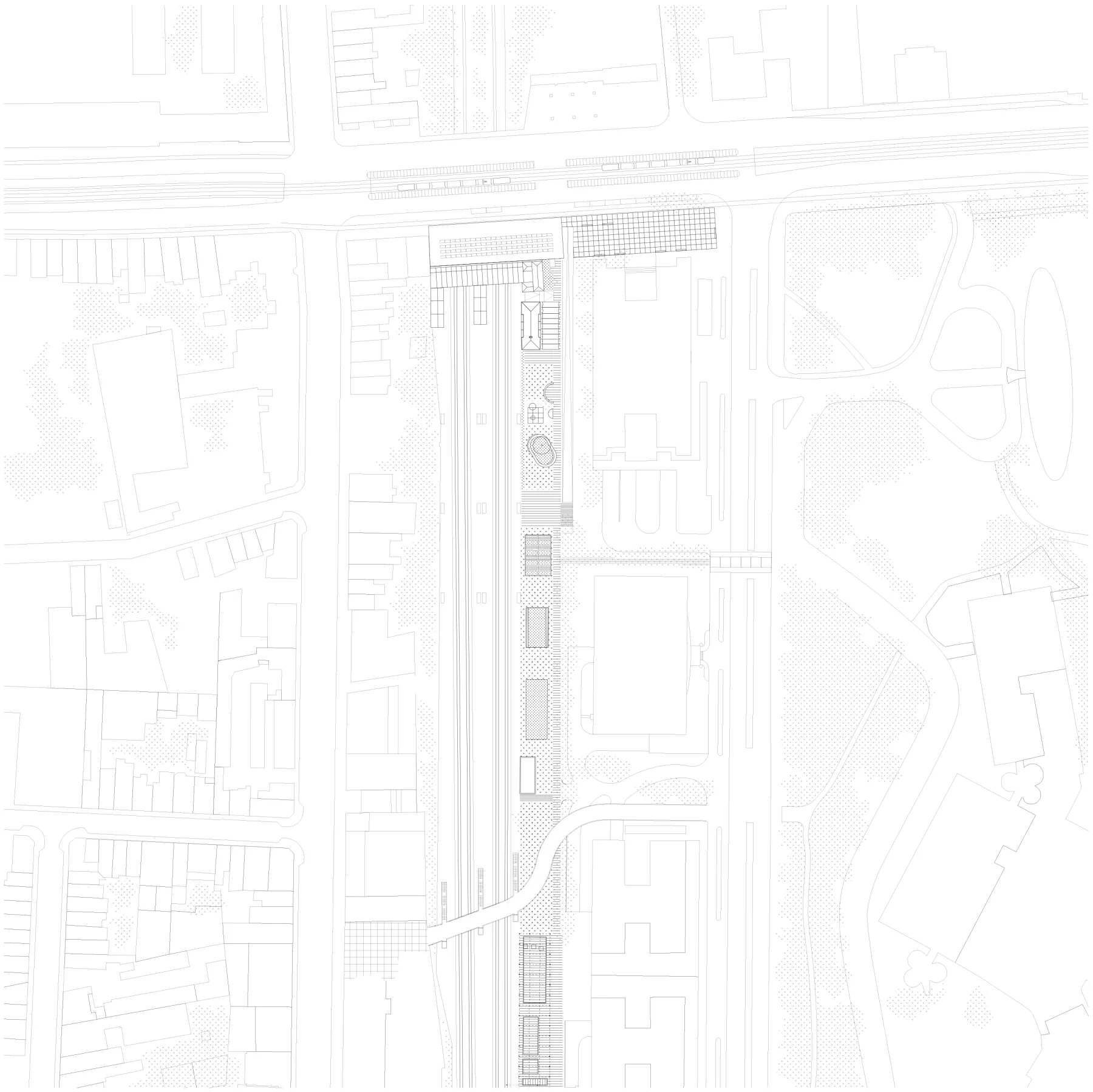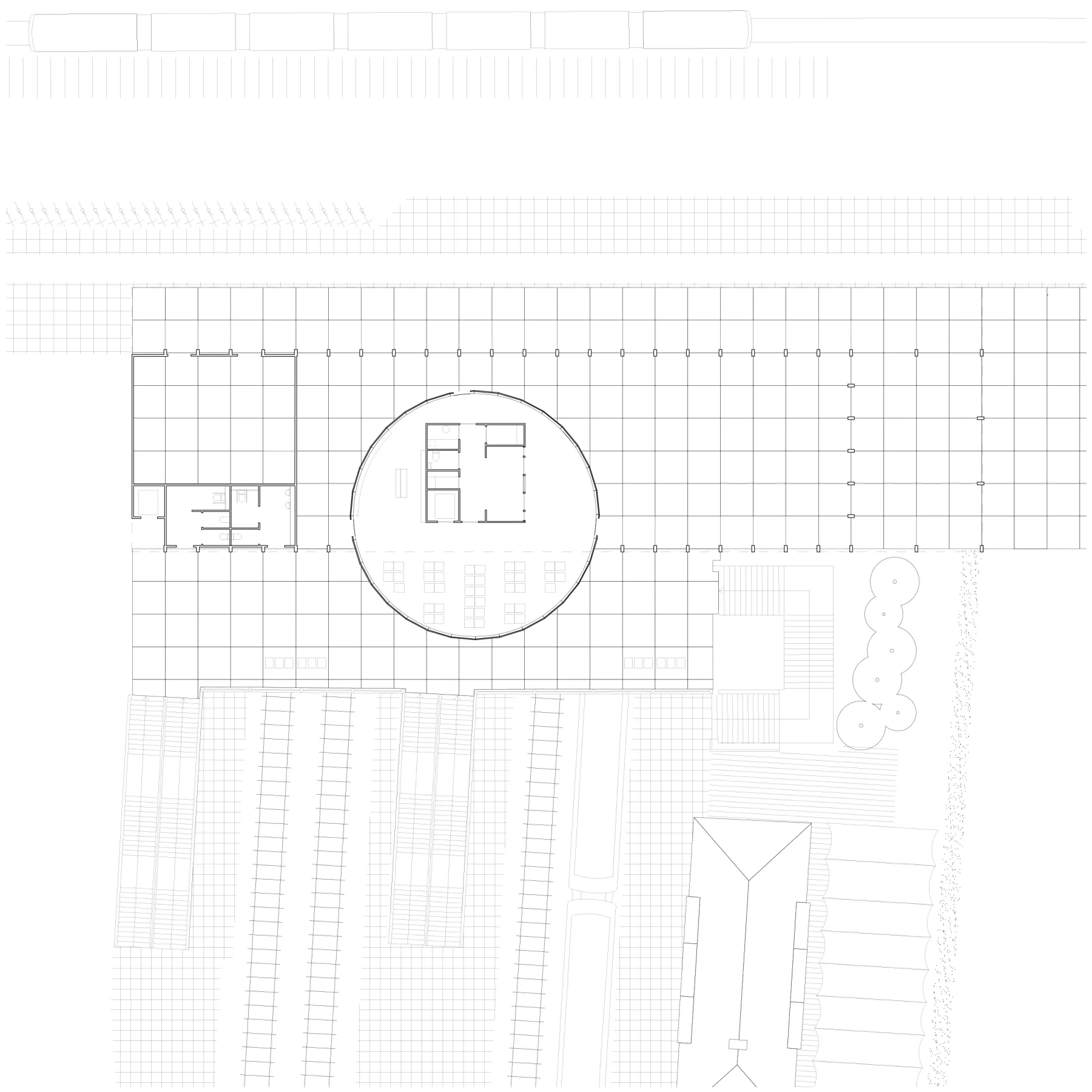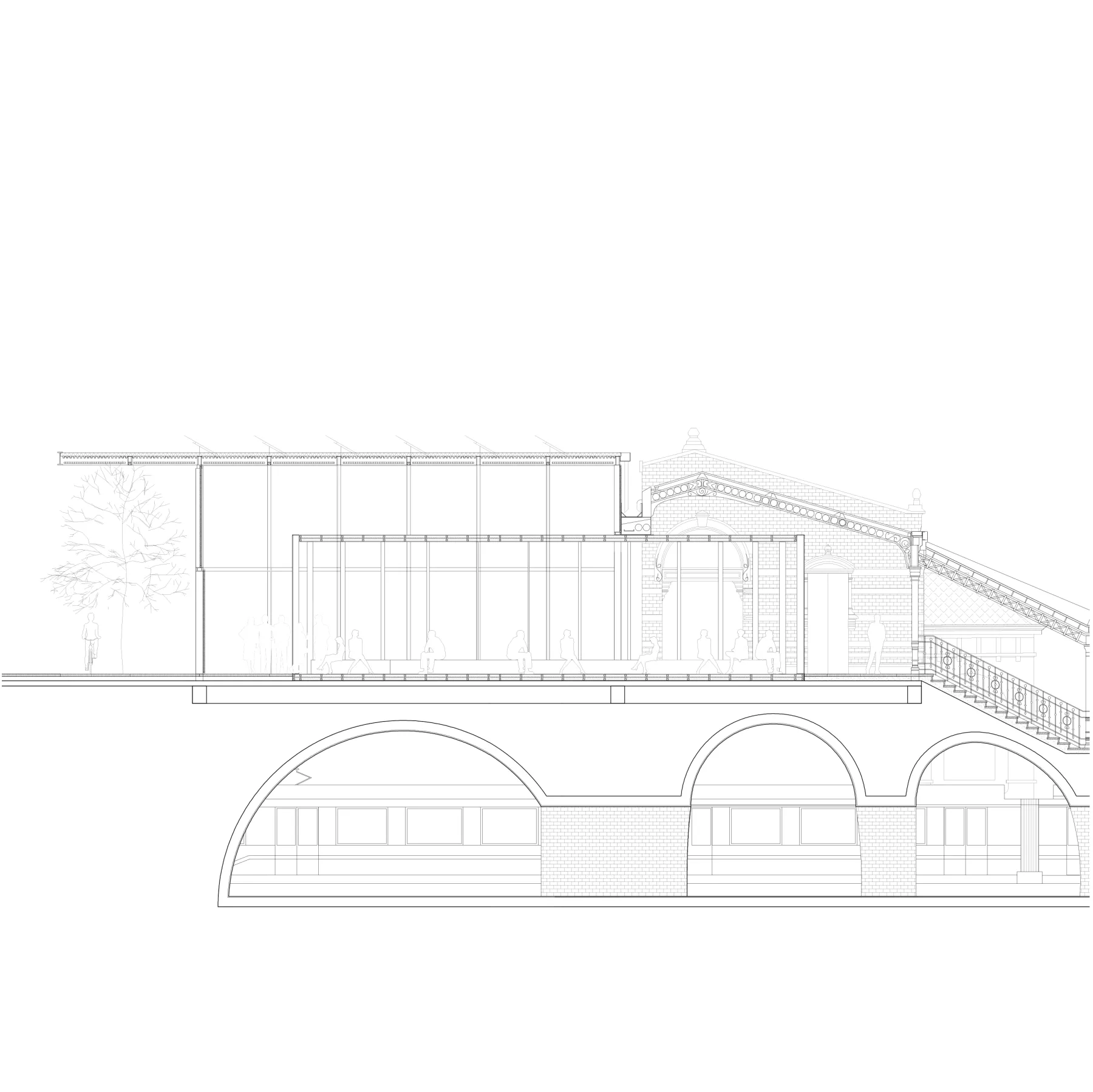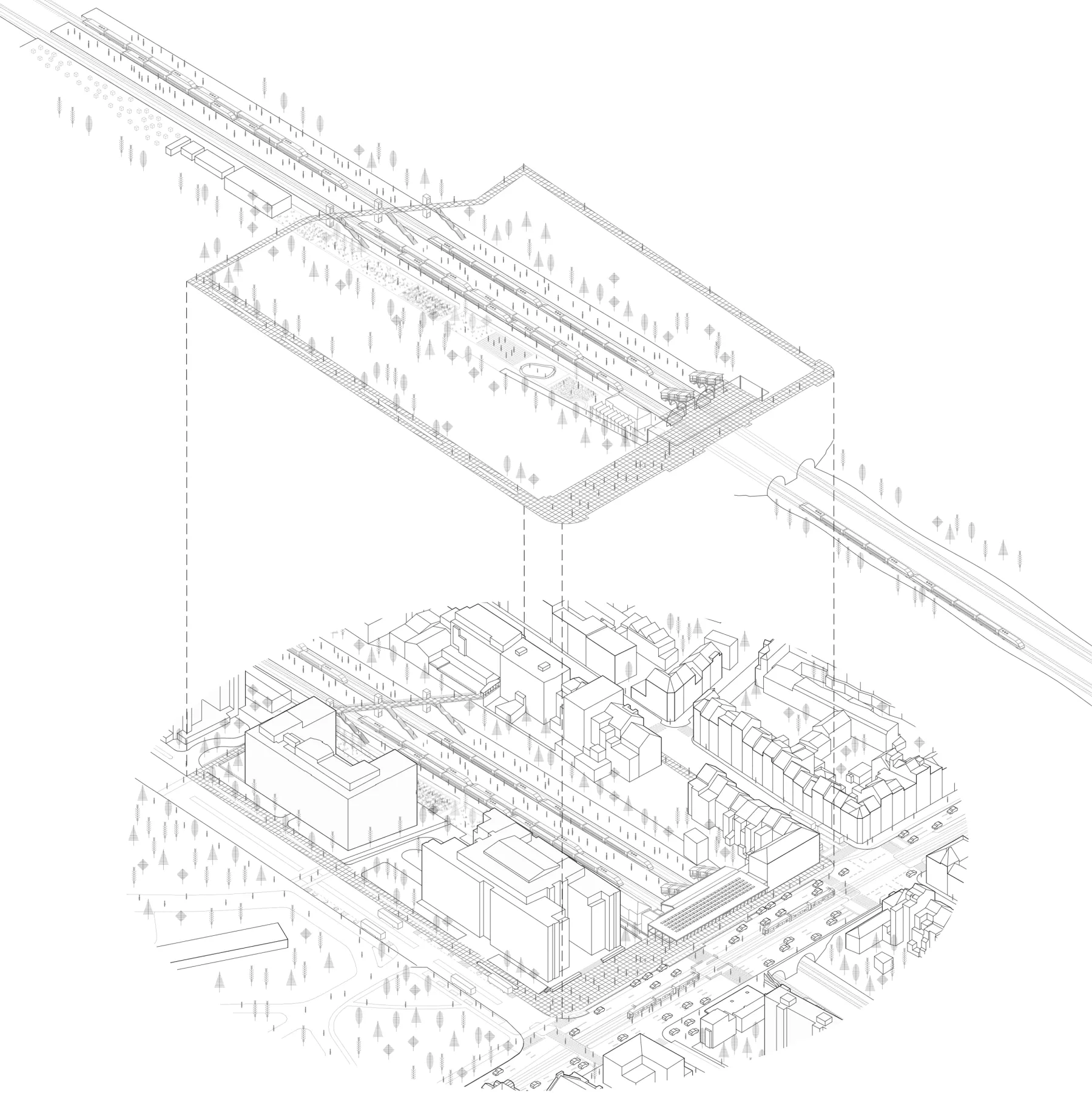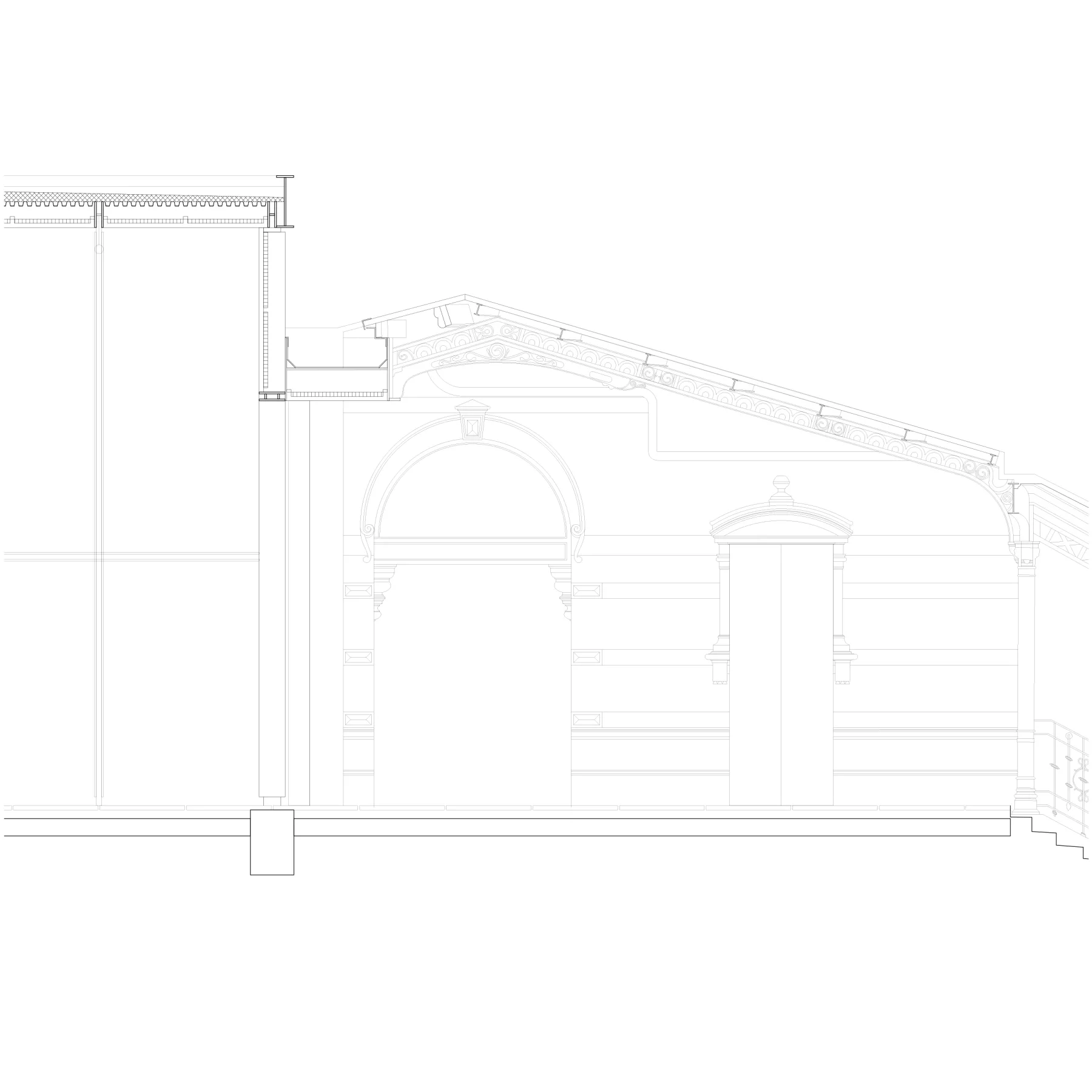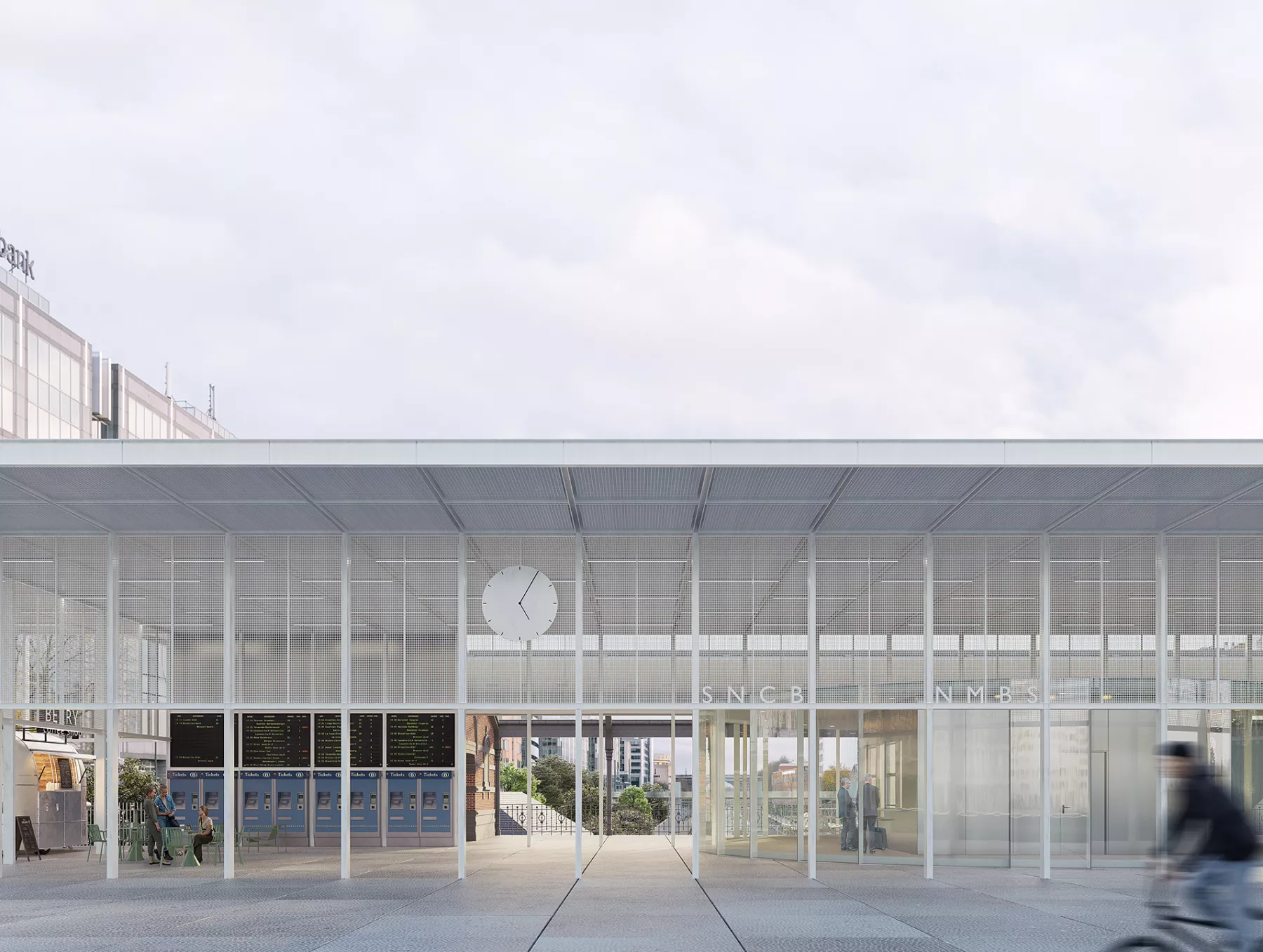- Location
1050 Ixelles
Belgium
- Type
-
- Landscape
- Renovation
- Train station
- Year
- 2020-...
- Size : landscape + built
- 20.827 m² + 846 m²
- Type of procurment
- public
- Status
- 1rst price competition
- Collaboration
SECA, SEA, BOCO studio
Etterbeek station - Renovation of the station and its surroundings.
Balancing scales and modes of transport while integrating a porosity that prevents an urban divide along the train tracks has been the guiding principle for the new Etterbeek station. The proposal aims to make Etterbeek train station a catalyst for urban dynamism. By integrating various urban functions, the project can meet sustainable development requirements, with mobility becoming a key driver of urban development.
The project explores mobility and consumption practices with the goal of increasing intensity, proximity, and sustainability. This new approach to mobility necessitates a shift towards a mixed transport concept, managing transitions in scale and modes. It positions the station hub as an objective.
Thus, the station asserts itself as a structuring element in the city through an urban landmark, an intermodal station, and a service station. This elevates the station beyond a mere object of consumption and its strictly functional role, transforming it into a genuine daily life element—a link between neighborhoods and users, embodying the concept of proximity urbanism.
The project comprises three urban figures, each linked to specific uses and mobilities:
- The forecourt's public space serves as a connection between the station and the city, integrating the station into the Brussels ring road's public space network.
- The intermodal hub slides under the roof structure and becomes the station, directing various mobility flows from this space.
- The garden connects to the university campus and forms part of the Woluwe valley.
The circular volume serves as the primary articulation of the intermodal hub: it guides flows, offers an information space visible from the street, monitors the activity of the forecourt, integrates a waiting room oriented towards the platforms, and accommodates a concession serving all users. Sales terminals are placed visibly from the public space and border the main flow path to maintain fluidity.
